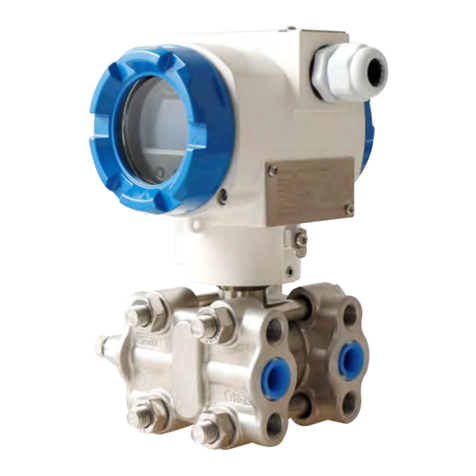
VPT10-H HART
®
PRESSURE TRANSMITTER INSTALLATION, OPERATION, CONFIGURATION AND MAINTENANCE MANUAL
____________________________________________________________________________________________________________________________
3
SUMMARY
1EQUIPMENT DESCRIPTION..................................................................................................................................6
1.1. BLOCK DIAGRAM.........................................................................................................................................6
1.2. CAPACITIVE SENSOR .................................................................................................................................7
1.3. OPERATING PRINCIPLE..............................................................................................................................9
2INSTALLATION ....................................................................................................................................................10
2.1. MECHANICAL ASSEMBLY.........................................................................................................................11
2.2. ELECTRICAL CONNECTION .....................................................................................................................14
3CONFIGURATION ................................................................................................................................................16
3.1. LOCAL CONFIGURATION..........................................................................................................................16
3.2. JUMPER CONFIGURATION FOR LOCAL ADJUST AND WRITE PROTECTION ....................................17
3.3. LIQUID CRYSTAL DISPLAY (LCD) ............................................................................................................18
3.4. HART
®
PROGRAMMER..............................................................................................................................18
3.5. LOCAL ADJUST CONFIGURATION TREE ................................................................................................20
3.6. HART CONFIGURATOR PROGRAMMING TREE .....................................................................................21
3.7. CALIBRATION .............................................................................................................................................25
3.8. DIAGNOSIS .................................................................................................................................................26
3.9. FDT/DTM CONFIGURATION......................................................................................................................28
4MAINTENANCE ....................................................................................................................................................29
4.1. ASSEMBLY AND DISASSEMBLY PROCEDURES....................................................................................29
4.2. SPARE PARTS............................................................................................................................................30
5CERTIFICATION ...................................................................................................................................................32
6TECHNICAL CHARACTERISTICS ......................................................................................................................33
6.1. IDENTIFICATION ........................................................................................................................................33
6.2. TECHNICAL SPECIFICATION....................................................................................................................34
6.3. ORDERING CODE ......................................................................................................................................35
7WARRANTY..........................................................................................................................................................38
7.1. GENERAL CONDITIONS ............................................................................................................................38
7.2. WARRANTY PERIOD .................................................................................................................................38
APPENDIX ....................................................................................................................................................................39





























